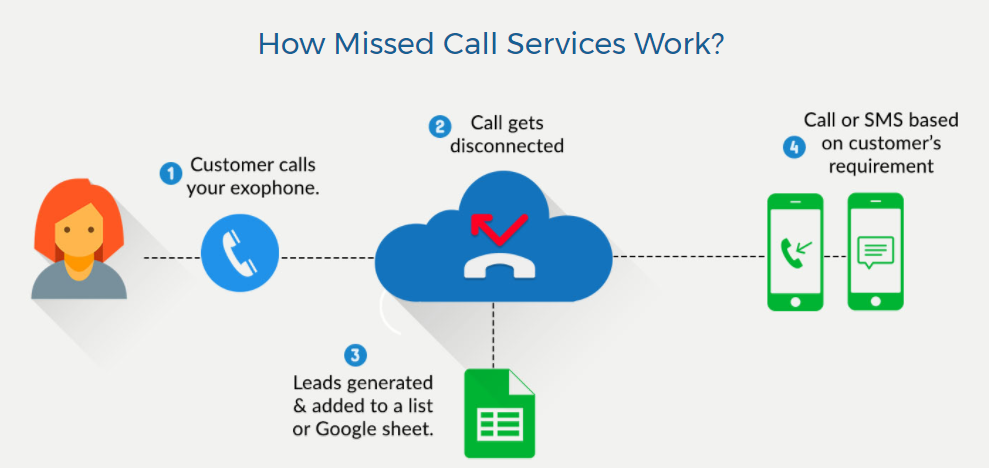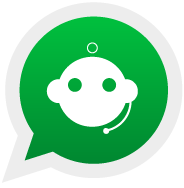 September 22, 2017
September 22, 2017 11 mins read
11 mins readFeel free to jump straight ahead to any of the following sections:
Computer Telephony Integration (CTI) is a term that refers to the practice of integrating your phone system with your computer systems. When you do this, you can manage all your phone calls from your computer.

What this means for your customers: When they call your company’s helpline number, an interactive voice response system (IVR) plays a greeting. They will be redirected to the right department and the right agent based on their input.
What this means for your agents: With this integration, all your customer information can be accessed from one single platform, making your sales and customer service processes highly efficient.
Simply put, computer telephony integration lets businesses run and scale their customer communication processes, without investing in hardware or on-ground operational costs.
A few years ago, computer telephony integration was a complicated process that involved PBX systems, setting up servers, investing in a lot of IT infrastructure and workforce. However, today, the entire process has been simplified. This is due to the advent of cloud telephony.
Exotel can today seamlessly integrate your phone calls with your other cloud-based software such as CRM, Helpdesk, ERP, etc. without any effort from your end. It is almost a plug and play process that takes less than a day to set up and get going.
You can also scale without worrying about infrastructure as your business grows as well.
With cloud telephony coming into play, here’s what the process of handling an incoming service call, with and without a CRM, now looks:
With a CRM:

In the above-shown flow, your CRM and telephony integration works in the following manner:
1. A customer calls your company. Your CRM identifies who the caller is and pulls in the customer’s information, forwarding it to Exotel (or any other cloud telephony software it is integrated with it).
2. Exotel will then forward the call to the right agent based on their availability. The agent can pick up this call on their simple mobile phone and doesn’t need any special software.
3. At the same time, a screen popup is displayed to this agent with all the relevant information about the customer. This information is retrieved from the CRM.
4. The information is then used by the agent to resolve the caller’s query immediately, without having to fumble through multiple systems – reducing the time required to resolve the customer’s concern.
5. The agent also has all the information required for a customer including their name, account history, etc. even before starting the conversation.
Without a CRM:

In case you decide not to use a CRM, the process of handling calls with cloud telephony is even more simple. The following process elucidates how an incoming call works in the absence of a CRM:
1. A customer calls your company
2. The call gets routed to the Exotel server
3. Exotel then routes the call to the first agent mentioned in the Exotel dashboard. If the agent does not answer or is busy, the call then goes to the next agent mentioned in the list.
One of the biggest advantages of CTI is that you can integrate voice with all your other support software. When you use Exotel, a simple drag and drop interface can help you build complicated call flows that can combine all of your customer interaction and give you the whole picture.
For example, if you provide support over emails, calls, social media and any other mediums that make sense for your business, it becomes imperative to have one platform that helps you make sense of your customer needs.
Here’s how you can do it – Syncing calls from Exotel to our systems using passthru API
Sign up for a trial account to test this out
1. CTI integration with CRM

Integrate with your customer relationship management software like Pipedrive, Leadsquared, Vtiger, PipelineDeals and more. Communicate and track your leads using click to call, SMS and call recordings.
2. CTI integration with Helpdesk software

Manage consumer calls and resolve queries in no time with CTI integration with helpdesk software like Zendesk and Freshdesk. Deliver an unrivaled customer experience, with a quick response time always.
3. CTI integration with eCommerce

Delivery last mile customer satisfaction by automating cash on delivery confirmation. A simple CTI integration with eCommerce platforms like Shopify can enable you to track your inventory in real time and also ensure that consumer data is secure.
4. CTI integration with Google Sheets

Never lose an opportunity to interact with your consumers. The CTI integration with Google Sheets enables you to send appointment confirmations, SMS Reminders, cancellations, and other information.
Now you’re already using some of the products under the integration and might think about why you need a CTI integration coming in place. The simple answer is – to reduce your costs and enable efficiency.
Also read: 4 easy Exotel integrations using a simple Google sheet
The use cases of CTI may vary from business to business, and the processes in place for customer handling. At Exotel, we see our customers using CTI for the following very actively:
1. Cloud call center
A cloud call center software enables you to handle customer calls, without having to set up any infrastructure or purchase any hardware on-ground. Specially designed to suit startups and fast scaling businesses, a cloud call center is easily scalable and saves on setup costs. Supporting more than 500 agents seamlessly, a cloud solution allows you to interact with your customers on a regular basis over calls or SMS.
2. Missed call solution
Missed call marketing campaigns are one of the easiest and the most effective ways to pass on customer updates. A simple missed call to a virtual phone number can be followed by an SMS alert with the information requested, making it simpler to communicate with consumers. Considering the increasing talk rates, it is a pocket-friendly solution for consumers to interact with a brand.
 Read more about Missed Call Services here.
Read more about Missed Call Services here.
Businesses across different industries can use the missed call services powered by computer telephony integration to verify customers, provide opt-ins/opt-out for notifications, lead generation, collecting feedback and more.
See how Amnesty and Indus Action use the Missed Call Solution.
3. Call tracking
To ensure a great customer experience, it becomes important to monitor conversations that your agents are having to ensure that the tone, the pitch, the messaging, etc. are in keeping with your customer vision.
This is where a call tracking software comes into play.
The software doesn’t just record the phone calls you make to consumers but also offers marketing intelligence before and after the call. This lets you capture the full customer journey, identify roadblocks in interaction and optimize your processes further better their experience.
There are times when you need to send messages that are not promotional in nature (messages about order status, OTP, etc.) Using computer telephony integration, you can send messages to your registered customers for either verification or simply drop a thank you message for completing an action. This enables you to avoid the frequent data breaches that have become common online.
To include OTP in your call flow, you can use the standard SMS API and integrate it with the OTP SMS service provider. Once done, you simply need to send the company’s SMS through the server on high priority. This will ensure that whenever a customer uses a system that needs a 2-factor verification or authentication, the message gets delivered quickly.
5. Number masking
Number masking is used by businesses to keep phone numbers hidden from one or both parties in a phone conversation. This enables you to protect the privacy of the parties involved in the conversation. Businesses make use of number masking to prevent any customer information from getting misused.
For example, cab aggregators can make use of number masking to connect cab drivers to customers without revealing the number of either of the parties. See how Ola uses number masking to keep your information secure, here.
6. Last mile delivery tracking
The need to offer instant gratification to consumers is increasing by the day. That’s why you need to track the orders they place in real-time to keep them updated. Using computer telephony integration, you can implement last mile delivery tracking solutions in your operating procedure.
Here’s how it works:

All third-party logistics companies that want to optimize their operational costs and set up efficient processes for last mile communication, use this solution.
7. Lead assist
For businesses, it is vital to establish a seamless channel of communication between the buyers and the sellers. Since virtual numbers are a scarce commodity, businesses to need to look for lead-assist solutions instead to ensure they lose no customer.
A lead assist software allows you to work with a limited number of virtual numbers and be in control of the way your consumer market is being handled. The software keeps your consumer data secure from vendors, while still letting them communicate for effective nurturing.
For instance, Quickr uses lead assist to smoothen their customer interaction at all stages of the funnel. You can take a look at how they use lead assist, here.
8. CTI APIs
Computer telephony integration comes with APIs (for e.g., call API, SMS API) that enable you to use one solution with another or simplify your existing processes for more efficiency. For instance, there is an API to customize your greeting messages using dynamic text or an audio from a URL. See other CTI APIs, here.
The high point of computer telephony integration software is that they can work in addition to your CRM or ERP easily. The integration is effortless and enables you to dig deeper into your customer conversations to draw actionable insights and context for meaningful campaigns.
In addition to improved customer experience, computer telephony integration also ensures privacy. The number masking feature ensures that agents don’t have access to a customer’s personal information.

1. Lowered costs
Using a CTI system means you’re going to do away with the need for a PBX and key system telephones. This brings the cost of purchasing, maintenance, and operations of hardware on-site. The CTI solution takes care of the server health and phone lines, to ensure seamless working at all times.
2. Easy scaling
It is important for startups and fast-growing businesses to look for solutions that offer easy scaling. This enables them to keep a tab on their resource spend and also use the solutions in an optimum manner. With CTI, your phone system grows with you. You can continue to add more users, virtual numbers and call flow with the changing business needs as you grow.
3. Highly reliable
The servers behind computer telephony integration, are located in secure data centers. This drastically reduces the chances of downtimes due to fiber cuts, roads getting dug up or physical outages. A CTI ensures an uptime of almost 99.94%.
4. Absolutely wireless
With CTI, you can say no to having endless servers and wire connections on-site. With everything hosted on the cloud and at the service provider’s data centers, you don’t have to get into the hassle of maintenance. Apart from zero server costs, you also don’t incur any real estate costs.
5. Custom Integrations
CTI offers simple APIs, allowing you to integrate it with existing software like your CRM, Helpdesk and your database. This connects all your solutions to create a call flow where you lose no customer data and can dig deeper into understanding their journey with your business. Right from where they are in the sales funnel to analyzing how they are using your platform, you can do it all without missing out on actionable.
6. Actionable insights
Receive key metrics to understand the performance of your operations with computer telephony integration. Cloud telephony offers detailed reports with data including the call volumes, the number of missed calls, agent productivity, duration of calls and more to help you optimize your processes for higher customer satisfaction.
While computer telephony integration is a universally good practice irrespective of the industry, it brings unique features and advantages to specific industries such as e-commerce, marketplaces, healthcare etc. Let us explore them one by one.
E-commerce
Competition is fierce in the e-commerce sector. So, being able to provide timely and efficient support to customers is critical to success. To achieve this, e-commerce players can integrate CTI for in-app calling, automated message updates, last-mile delivery tracking, and OTP services. This helps improve the call management system, increase efficiency and optimise call logs. With CTI, you can ensure seamless and timely communication with every customer.
Marketplaces
Marketplaces connect sellers and buyers, making it a slightly more complex environment. They work with multiple sellers, packaging services, courier partners etc., each of them sharing information in their own ways. Computer telephony integration makes it easy for agents to access all this information and inform customers accordingly.
With CTI, agents track the status of orders, transactions, payments, refunds etc., effectively. They can also monetise each touchpoint by offering upgrades, cross-selling, upselling etc. They can also ensure the privacy of their customers by controlling access to their personal information from vendor partners.
This is exactly what Sulekha, a digital platform for local services in India, did with Exotel. From customers, Sulekha learned that they got calls from service providers even after their requirement was fulfilled. This was possible because, sometimes, customers’ phone numbers were passed on to other 3rd party service providers as well. To prevent this and eliminate spam, Sulekha chose Exotel’s number masking. Read the whole story here.
3PL
Visibility, communication and privacy are essential factors in the logistics sector. CTI can help achieve exactly that. CTI enables:
Ekart, India’s largest logistics and supply chain company, achieved all these three outcomes with Exotel. They ensured visibility with last-mile delivery tracking, enabled seamless communication between customers and delivery partners, and ensured customer privacy with number masking. Read more here.
Banking
Data security is critical in banking. Banks and financial institutions need to deliver stellar customer service without compromising on security and privacy. Computer telephony integration can help with that. With CTI,
Insurance, broking and financial services
In financial services, regulatory compliance is an important factor. Privacy of customer information and auditability of all communication is critical. CTI can enable this. For instance, with CTI, customers can directly call the company with a simple click-to-call implementation on the website or mobile app. Agents, too, can make calls directly from the CRM instead of manually dialling the customer’s number. This also protects the customer’s privacy. Moreover, CTI enables the automatic recording of all calls for regulatory compliance purposes.
Rupeek, a leading digital lending fintech platform, leveraged these features and more. They used click-to-call and auto-dialler to improve agent productivity while scaling up. Read more about their experience with Exotel here.
Ed-tech
With online classes being the new norm in the education sector, CTI can significantly enhance the learning experience.
Healthcare
The healthcare space has been significantly affected by the pandemic. Healthcare workers need tools that ease their burdens while ensuring that patients are treated in time. CTI can play a crucial role in enabling this.
Netmeds, a leading e-pharma portal, used Exotel’s click-to-call feature to connect doctors and patients securely. In addition, they used number masking to protect the privacy of the patient. And recorded calls for compliance needs. See how they improved customer experience on their teleconsultation platform here.
The easiest way to manage your business processes is to let your business processes ‘talk’. Cloud telephony helps you work towards building a better user experience, using calls and SMS as the primary touch points for most processes.
At the same time, the ability to track these calls and messages also helps businesses measure the effectiveness of their campaigns and innovate consistently.
To understand how cloud telephony can power the growth of your business, please download our free, detailed ebook.
